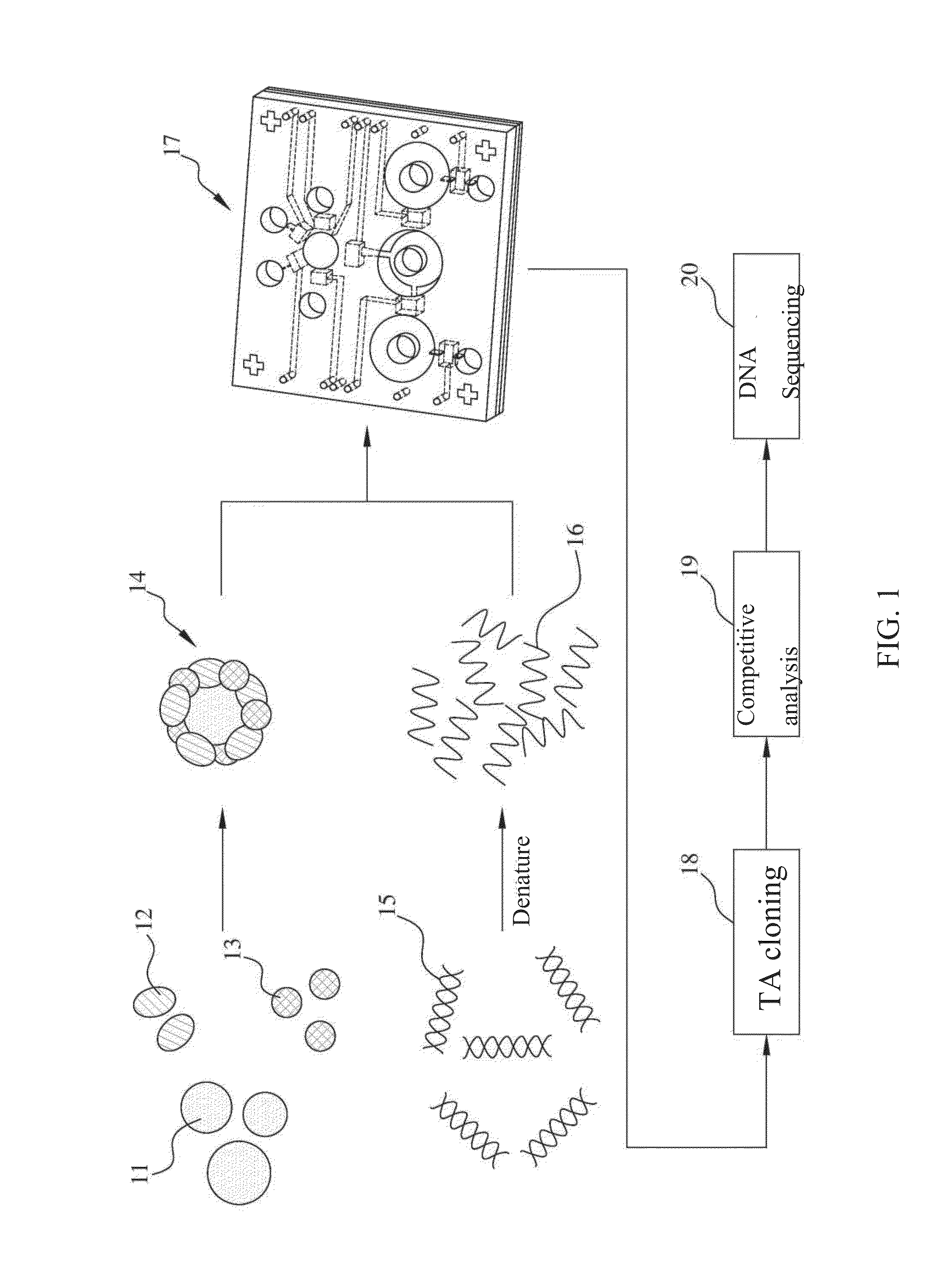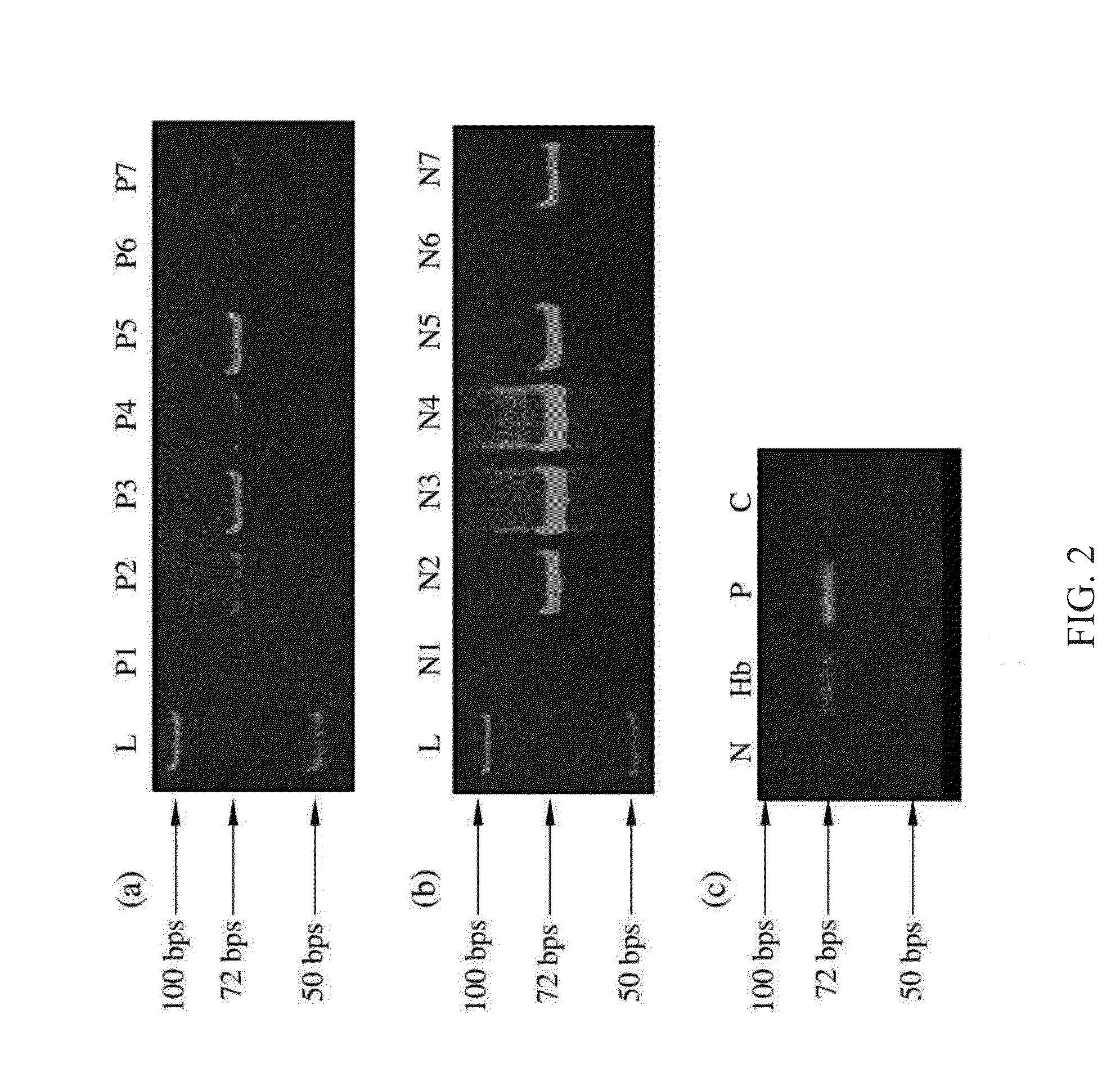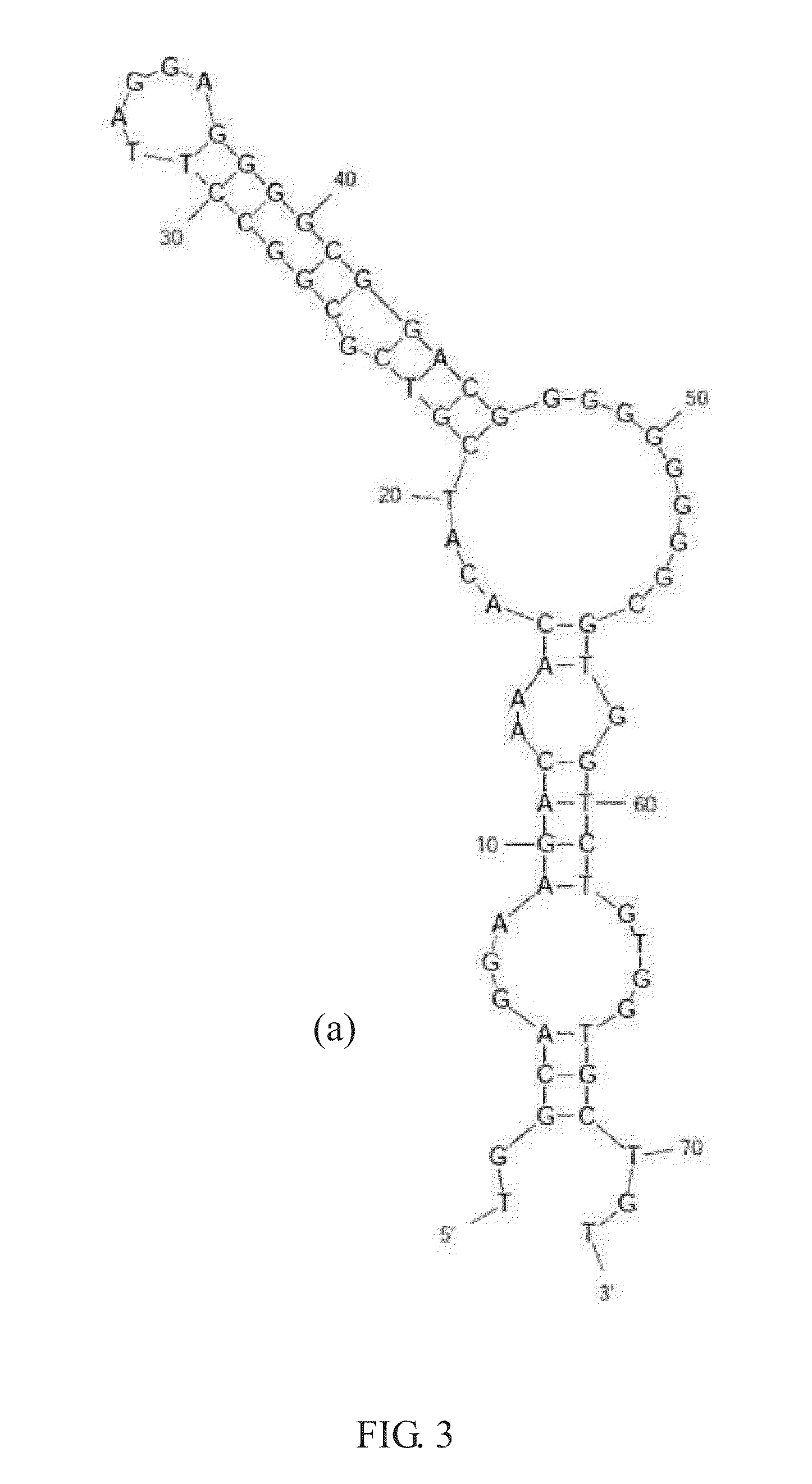HEMOGLOBIN A1c-SPECIFIC APTAMER, HEMOGLOBIN-SPECIFIC APTAMER, AND APPLICATIONS THEREOF
a technology of a1c and a1c, applied in the field of hemoglobin-specific aptamers, can solve the problems of low diagnosis and monitoring accuracy, unstable fluctuation, and diabetes mellitus, and achieve the effects of low molecular weight of the aptamer of the present invention, high specificity and binding rate, and resistance to degradation
- Summary
- Abstract
- Description
- Claims
- Application Information
AI Technical Summary
Benefits of technology
Problems solved by technology
Method used
Image
Examples
example 1
[0039]Selection of Hemoglobin A1c-Specific Aptamer
[0040]For the selection of hemoglobin A1c-specific aptamer as substitute for antibody and as a biomarker for the detection of hemoglobin A1c in blood, the present invention utilized magnetic beads techniques and SELELX because only a small amount of reactant is needed and the magnetic beads are capable of withstanding the high temperature during PCR amplification. Hemoglobin A1c and aptamers (nucleic acids) are bound to each other via, primarily, van der Waals interaction and hydrogen bonds. As a result, besides the hemoglobin A1c-specific aptamer, there are also molecules in the ssDNA library that could bind to hemoglobin A1c non-specifically via electrostatic interaction. Hence, a plurality of SELEX cycles was performed to reduce the possibility of selecting non-specific binding molecules.
[0041]Please refer to FIG. 1, the flow chart for the selection of aptamer specific for target protein (hemoglobin A1c or hemoglobin) using the mi...
example 2
[0048]Detection of Hemoglobin A1c using the Hemoglobin A1c-Specific Aptamer
[0049]The method used to detect hemoglobin A1c in the present invention is known as a Two-antibody assay and is performed using the above detection microfluidic chip. Firstly, blood and the magnetic bead conjugated with anti-HbA1c antibody were added to the reaction chamber of the microfluidic chip and were mixed by micromixer. After hemoglobin A1c in blood bound to the magnetic bead conjugated with HbA1c antibody, a magnetic field was applied and the unbound substances were washed away. Then, a luminescent agent-labeled HbA1c antibody, preferably acridinium ester-labeled HbA1c antibody, was added to the reaction chamber to allow reaction with the HbA1c captured to take place. Finally, H2O2 and NaOH were added and mixed, and the chemiluminescence signals were detected by luminometer.
[0050]Please refer to FIG. 4, the flow chart for the detection of hemoglobin A1c in blood using the hemoglobin A1c-specific apta...
example 3
Selection of Hemoglobin-Specific Aptamer
[0052]The present invention also utilize SELEX microfluidic chip to select hemoglobin-specific aptamer which can be used to substitute antibody as a biomarker for identifying hemoglobin in blood. The selection process of hemoglobin-specific aptamer is similar to Example 1, therefore, please refer to FIG. 1 for the flow chart for the selection of aptamer specific for target protein (hemoglobin A1c or hemoglobin) using the microfluidic chip of the present invention. Please note that the target protein of this embodiment is hemoglobin.
[0053]In this embodiment, the SELEX selection is a hemoglobin positive selection when hemoglobin-magnetic bead complex was used to bind with single strand DNA molecule, whereas the SELEX selection is a hemoglobin negative selection when BSA-magnetic bead complex was used. According the hemoglobin positive and hemoglobin negative selection of this embodiment, aptamer with high specificity to hemoglobin can be obtaine...
PUM
| Property | Measurement | Unit |
|---|---|---|
| depth | aaaaa | aaaaa |
| thickness | aaaaa | aaaaa |
| diameter | aaaaa | aaaaa |
Abstract
Description
Claims
Application Information
 Login to View More
Login to View More - R&D
- Intellectual Property
- Life Sciences
- Materials
- Tech Scout
- Unparalleled Data Quality
- Higher Quality Content
- 60% Fewer Hallucinations
Browse by: Latest US Patents, China's latest patents, Technical Efficacy Thesaurus, Application Domain, Technology Topic, Popular Technical Reports.
© 2025 PatSnap. All rights reserved.Legal|Privacy policy|Modern Slavery Act Transparency Statement|Sitemap|About US| Contact US: help@patsnap.com



